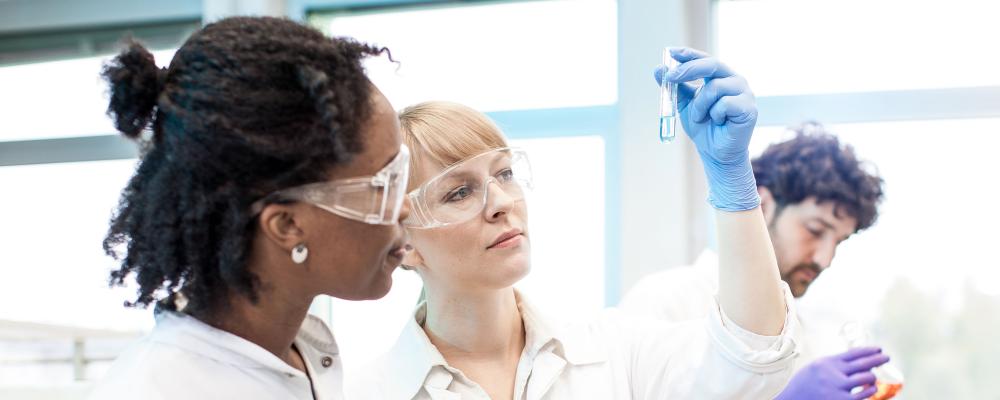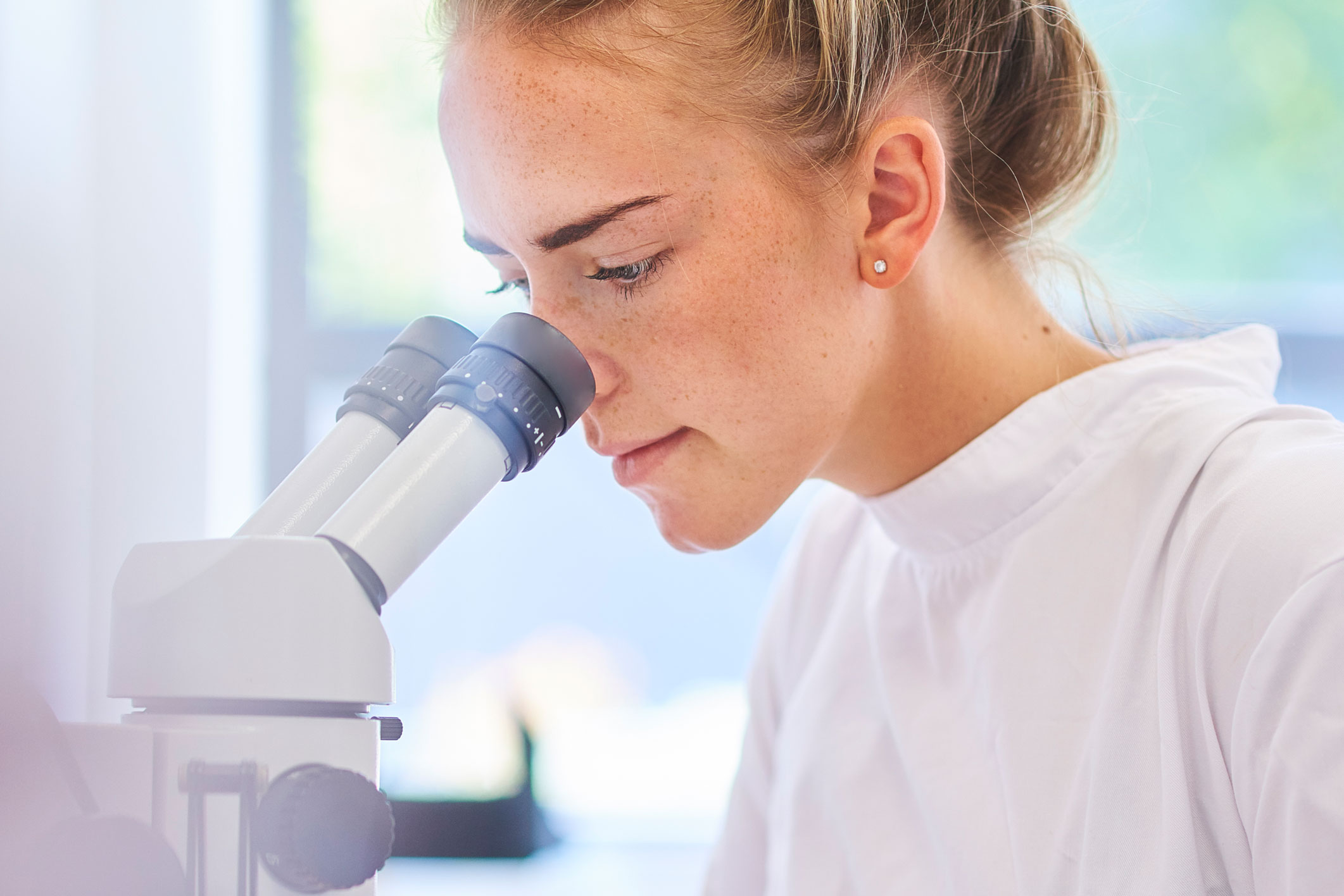Portal Our Laboratories


Research activities of the Laboratory for Food Safety
The research conducted by the Laboratory for Food Safety aims to support the characterisation of hazards potentially found in foods and understand their mechanisms of action, in order to produce the knowledge required for the assessment and management of foodborne health risks. It consists in updating exposure data, in particular through large-scale Total Diet Studies.
The laboratory therefore works to produce essential knowledge to:
- identify, quantify and characterise food hazards;
- monitor them (prevalence, exposure);
- describe and model their behaviour to improve quality and hygiene control during the production or preparation of food;
- understand the mechanisms of action of these hazards (virulence, toxicity, bioaccessibility);
- identify potential resistance (to antibiotics, disinfectants, cleaning products, heavy metals, etc.) and understand the emergence and fate of these hazards all throughout the food chain.
The laboratory’s research projects are generally funded through European (Horizon 2020, One Health European Joint Programme, European Food Safety Authority (EFSA)) and national (French Research Agency, Coordinated Regional Research Actions (ARCIRs), State-Region plan contracts (CPERs), Single Interministerial Fund (FUI), fields of major interest, supervisory ministries, FranceAgriMer) calls for tenders.
The laboratory is a host organisation for PhD students from doctoral schools of the Higher Education and Research Community in Eastern Île-de-France, known as Paris Est Sup, with the ABIES doctoral school, and from the Universities of the Littoral Côte d'Opale (ULCO) and Picardie Jules-Verne (UPJV), with the STS doctoral school.
Participation in public-private research units and networks
The laboratory is a partner of joint technology units (UMTs) and joint technology networks (RMTs). These are scientific and technical partnerships created and supported by the French Ministry of Agriculture. Their mission is to promote collaborative work between research, agricultural technical education and agricultural development teams with a focus on topics of great socio-economic and environmental importance. UMTs are more specifically created with a view to developing national research programmes that produce operational results for short- or medium-term deployment.
The laboratory is or has been involved in:
- the Chlean and Chlean Pass RMT (2021-2026) on the hygienic design of production lines and equipment and improvement of cleanability. This network is dedicated to the topic of bacterial persistence in food processing sectors. The main goal is to acquire objective data to be able to guide companies in the establishment of their health control plans, taking into account changing societal and environmental concerns;
- the AL-Chemistry RMT (2020-2025). This network focuses on scientific and technical issues relating to various chemical contaminants of natural and anthropogenic origin that can affect the sanitary quality of food. The RMT has 31 members: agricultural and food processing professionals, economic operators from different sectors, consultants, trainers, teachers, and members of the scientific community. The aim of the AL-Chemistry RMT is to create a forum for dialogue and the sharing of knowledge and data, to provide a systemic view of chemical contaminants and consumer exposure levels;
- the ASIICS UMT (2017-2021): unit for surveillance, investigation and intervention during health crises. In partnership with technical institutes in the milk (ACTALIA) and pork and pig (IFIP) sectors, the laboratory carried out work to optimise surveillance systems for food chain contamination by Salmonella and Listeria;
- the QUALIMA RMT (2014-2019): management of the microbiological quality of food. Coordinated by the AERIAL and ACTALIA technical institutes, this RMT aimed to provide methodologies and tools for the validation of measures to manage the microbiological quality and safety of food, the evaluation of processes taking their impact on bacterial physiology into account, and the optimisation of verification and surveillance plans.
Main research projects
Tracking pesticides in food using high-resolution mass spectrometry: targeted and non-targeted approaches
Funding: National Research Agency, as part of the Young Researchers Programme
The main objectives are to:
- demonstrate the relevance of liquid chromatography with high-resolution mass spectrometry (LC-HRMS) for detecting pesticides in food, so as to not overlook pesticide misuse, emerging pesticides, or malevolent acts, and thereby improve food safety, in a context where the exposome (all exposures over a lifetime) is becoming more and more important;
- offer the capacity to conduct retrospective analyses;
- develop non-targeted strategies to explain food poisoning outbreaks;
- participate in the sharing of this technology and related approaches with surveillance laboratories.
One Health Harmonisation of Protocols for the Detection of Foodborne Pathogens and AMR Determinants
Funding: One Health EJP
The objective is to build the European Union's capacities in terms of the interoperability of laboratories and the construction of interfaces between the areas of animal health, food and human health. Gaps and needs will be analysed, based on current knowledge, to identify and classify the most important fields for the development and implementation of harmonised protocols in all these sectors using a “One Health” approach.
ANSES will contribute to:
- developing an “OHLabCap” comparative analysis instrument by surveying One Health laboratory interoperability, capacity and performance across all EU countries and the European Economic Area. This will help identify requirements for developing and implementing harmonised, interoperable protocols for the detection and typing of foodborne pathogens and determinants of antimicrobial resistance;
- improving the European Union's ability to respond to challenges such as foodborne zoonoses, antimicrobial resistance and emerging threats, through partner-to-partner training and practical workshops, following the OHLabCap survey, once harmonised protocols have been developed.
Cross-sectoral framework for quality assurance resources for countries in the European Union
Funding: One Health EJP
The aim of this project is to strengthen collaborative efforts between various sectors: animal health, food safety, and public health.
These objectives are being achieved through the creation and development of harmonised systems, the organisation of proficiency tests, and the sharing and management of collections of bacteria and “EUROpanelOH” reference materials. These collections will be made visible and accessible via the creation of a web platform ensuring their sustainability and the viability of the data used in risk assessments.
European programme for the establishment of validated procedures for the detection and identification of biological toxins
Funding: European Horizon 2020 programme
Recent incidents in Europe and worldwide have threatened civil society through the attempted use of biological toxins, thereby showing that increased vigilance and adequate preparation are necessary in a world facing growing risks. Previous studies showed that there is a lack of robustness in European preparedness for biotoxin incidents. There is a need for standard analytical tools and procedures, reference materials, state-of-the-art training, and the establishment of a European proficiency testing scheme to detect these biotoxins.
Development and harmonisation of innovative methods for comprehensive analysis of foodborne toxigenic bacteria, i.e. Staphylococci, Bacillus cereus and Clostridium perfringens
Funding: One Health EJP
This project aims to propose new approaches, other than next-generating sequencing (NGS), to better characterise and understand the role of three bacteria (Staphylococcus aureus, Bacillus cereus and Clostridium perfringens) in outbreaks of foodborne illnesses. In fact, the toxins produced by these three pathogens are the second leading cause of foodborne outbreaks in Europe, according to the reports of the European Food Safety Authority (EFSA), even though only 10% of cases are declared as “confirmed”. The project is developing tools to detect and quantify bacterial toxins, and the factors involved in their virulence, including those that still remain undetectable (emerging threats).
Adaptive traits of Listeria monocytogenes to its diverse ecological niches
Funding: One Health EJP
The ListAdapt project aims to decipher the genes and molecular mechanisms underlying the adaptation of the Listeria monocytogenes (LM) bacterium to its various ecological niches: a combination of next-generation sequencing (NGS) techniques and phenotypic methods is used to compare data from a large set of strains from the environment, animals, food, and clinical cases in several European countries. The goal is to understand why clonal complexes succeed in one environment and fail in another.
Funding: National Research Agency
This project has five main objectives:
- understand the process leading to the fragmentation of plastic debris in marine environments;
- develop a methodology for the sampling and characterisation of the smallest microplastics and nanoplastics;
- obtain data on their distribution in environmental samples (seawater, sediment, marine organisms);
- acquire knowledge on their fate in marine environments and assess their toxicity to marine life;
- assess the transfer of these micro- and nanoplastics in the marine food chain and the potential related risks to consumer health.
COllaborative Management Platform for detection and Analyses of (Re-)emerging and foodborne outbreaks in Europe
Funding: European Horizon 2020 programme
COMPARE aims to harness rapid advances in molecular technology to improve the identification and prevention of emerging infectious diseases and foodborne outbreaks. To this end, the project has established an analytical framework and a data exchange platform to enable the real-time analysis and interpretation of sequencing data and associated metadata (e.g. clinical and epidemiological data) on the pathogens involved in foodborne illnesses.
Multi-approach determination of metal-based pesticides in food
Funding: European Horizon 2020 programme-MSCA
Dithiocarbamates (DTCs) are fungicides effective against a broad spectrum of fungi and plant diseases. Despite their significant environmental and food chain impact, the current analytical approaches used provide incomplete information on individual exposure to DTCs. This project developed and validated a method for the accurate and selective determination of DTCs in food using a multi-approach strategy. The impact of different cooking methods on DTC degradation pathways was also investigated. By combining powerful separation techniques such as high-performance liquid chromatography with elemental and molecular spectrometry, this project helped acquire deeper knowledge on the presence of DTCs in various foodstuffs and on their degradation mechanisms during food processing. Additionally, the project contributed to the development of a reference method for selective DTC determination in food, thereby having a great impact on scientific research in the area of food quality control at European level.
Parasite risk assessment with integrated tools in European Union fish production value chains
Funding: 7th Framework Programme for Research and Technological Development - Knowledge-Based Bio-Economy Network
The aim of the Parasite programme was to provide new scientific data and technological developments to detect, monitor and mitigate the impact of zoonotic parasites, primarily Anisakidae but also trematode metacercariae. These are found in European and imported seafood products. Risk assessments of zoonotic parasites ensured significant progress beyond the state of the art. The project improved molecular identification, antigen/allergen characterisation, parasite exposure assessment, detection methods, and treatments. It also carried out a quantitative risk analysis. The main results contributed to enhanced seafood safety and consumer confidence, strengthened the competitiveness of European seafood, and improved EU food safety policies.
Reducing the environmental impact of hygiene procedures in refrigerated food processing plants through optimal use of air drying
Funding: National Research Agency
The entry of Listeria monocytogenes into food processing plants is inevitable, even when hygiene procedures are carried out properly. Significant efforts have to be made to prevent the bacterium from persisting. Moreover, hygiene procedures use large amounts of water and cleaning products. The project's overall objective was to use air drying to prevent the persistence of the bacterium while reducing the environmental impact of hygiene procedures.
Safety of organic meat
Funding: National Research Agency
The SOMEAT project aimed to provide objective scientific data to assess the benefits and potential risks of organic meat production systems in terms of their contaminant content. The project also provided new insights into socio-economic determinants of organic meat consumption and proposed original approaches for back-tracing contaminants in the meat production chain. SOMEAT was a project combining basic and industrial research. It took into account the three pillars of meat production system sustainability through multidisciplinary approaches covering the chemistry of contaminants, food engineering, cellular and molecular toxicology, risk assessment, economics, “omics” approaches, and chemometrics.